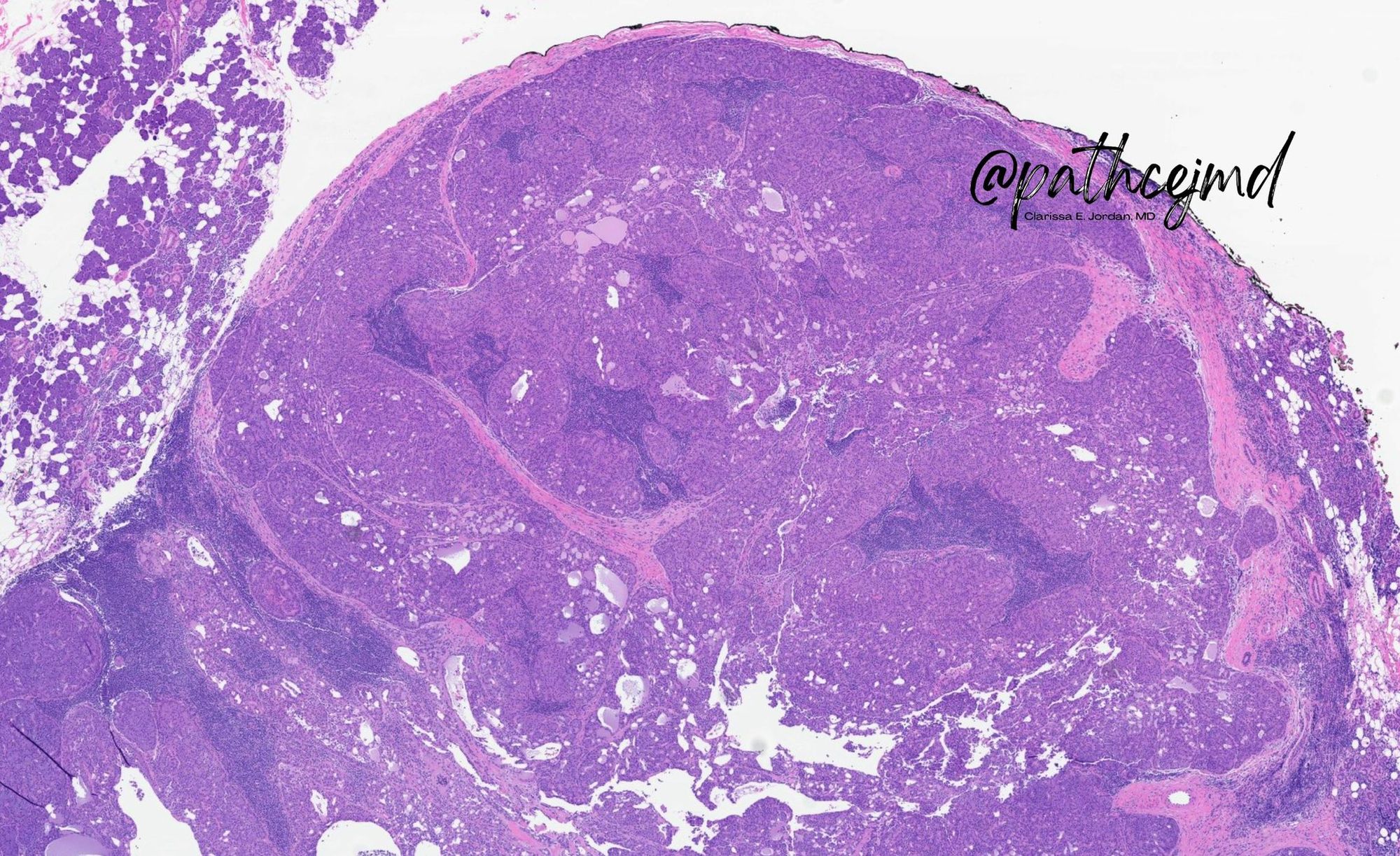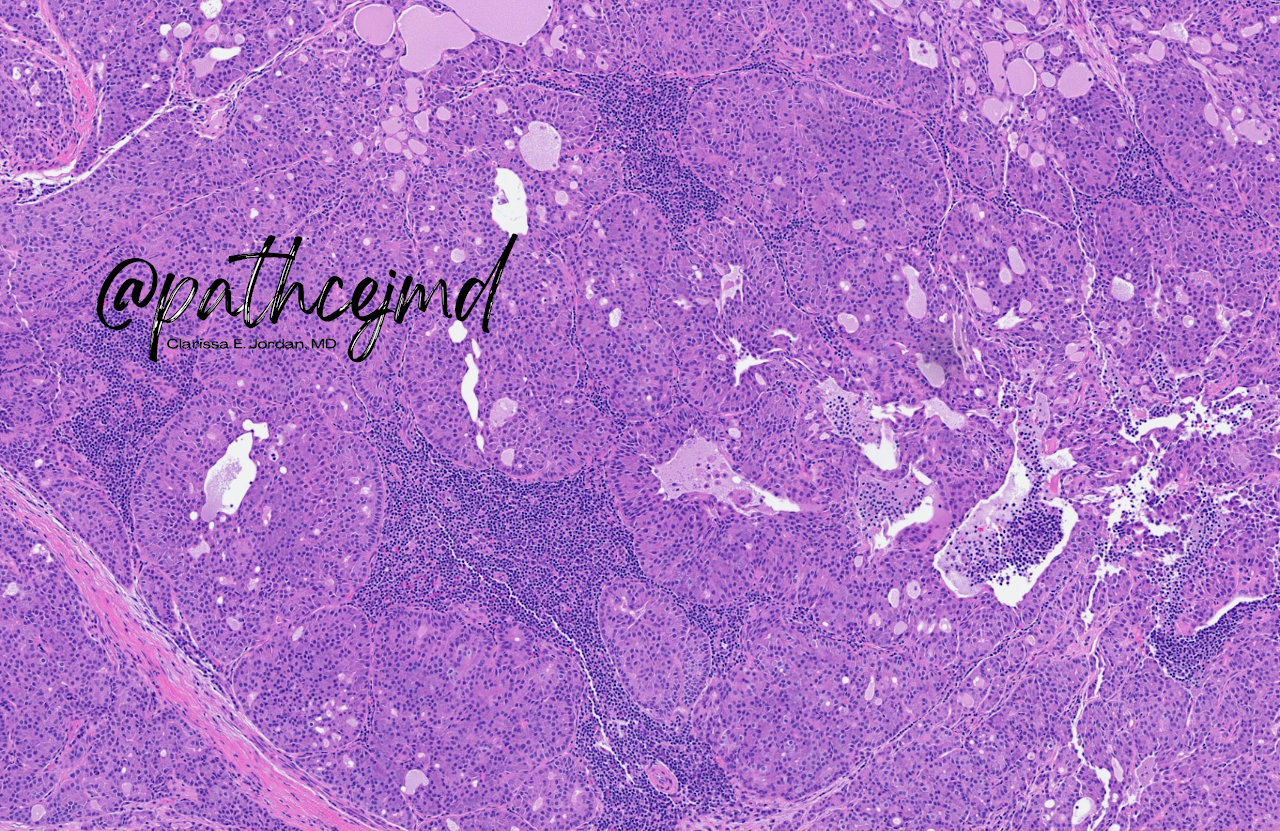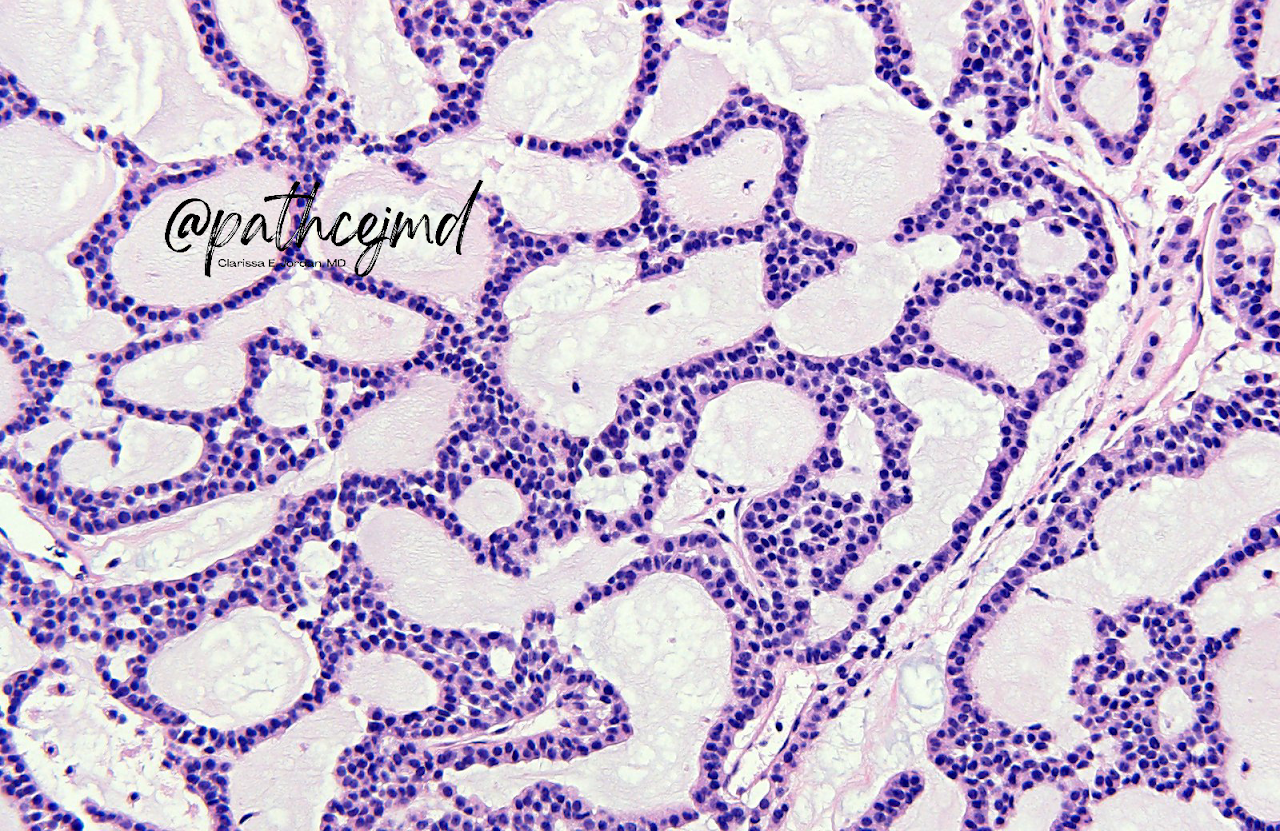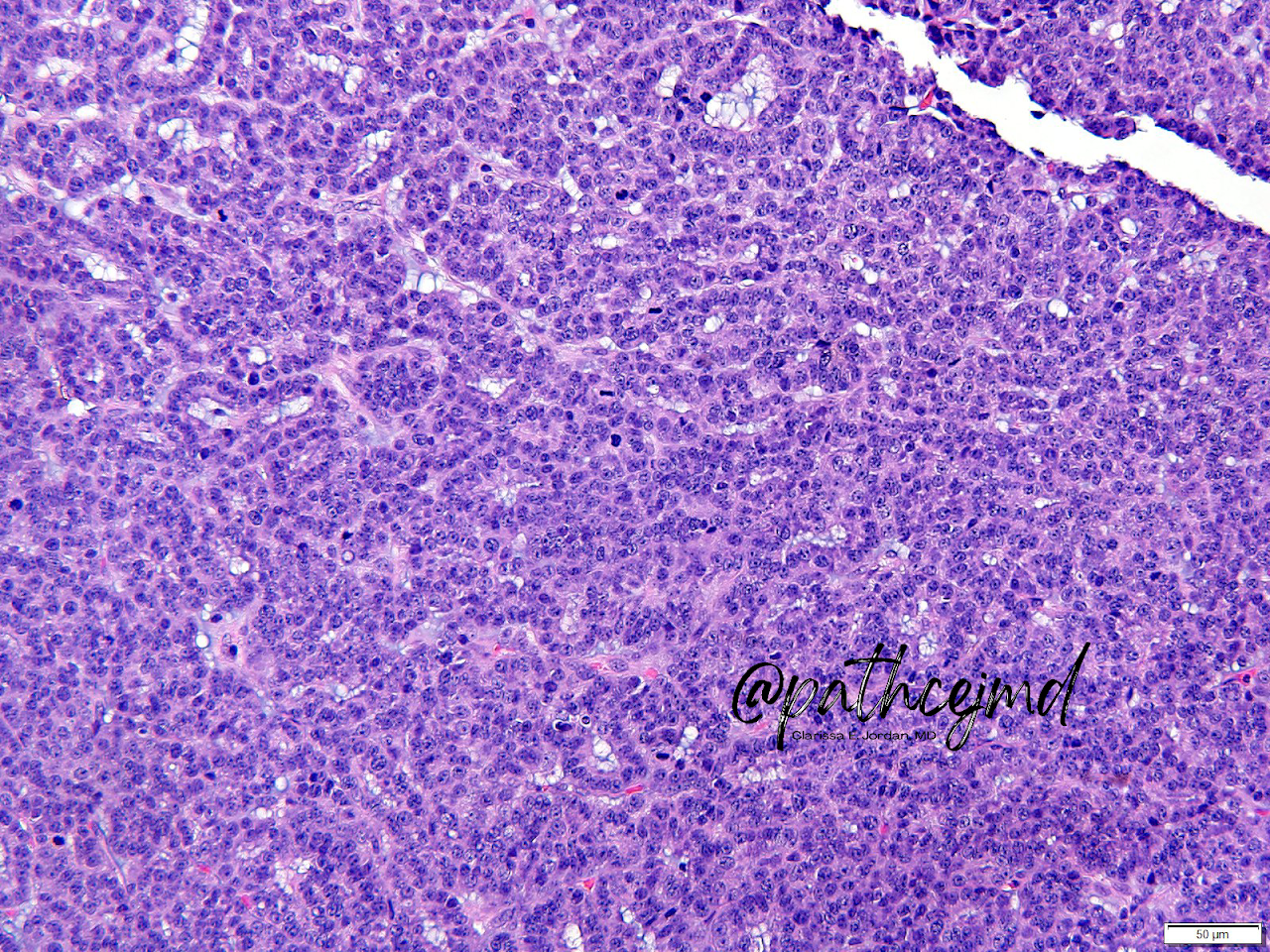Case 9: Acinic Cell Carcinoma

Key features: Typically a triphasic (or more) neoplasm, though one pattern and cell type often predominates
- Patterns: solid/lobular⬇️, microcystic, papillary, cystic⬇️, follicular
- Cell types: serous acinar, intercalated duct cells, vacuolated cells, clear cells
- Typical low to intermediate grade


Clinical considerations:
- Generally has a good prognosis w 5yr survival rate = 90%
- Complete surgical excision is treatment of choice
- Local recurrence in about 35% of cases
High grade transformation ⬇️ can occur and warrants more aggressive treatment

Immunohistochemistry for acinic cell carcinoma:
🐶 DOG1 shows delicate membranous staining
📌 NR4A3 highly specific, strong nuclear staining - though not (yet) widely-used
🍬 PAS+ granules sometimes seen (often patchy)
https://pubmed.ncbi.nlm.nih.gov/31094928/
https://www.nature.com/articles/s41467-018-08069-x
Now for some #MolecularPath
(wouldn’t be one of my cases otherwise 😝)
t(4;9) is present in 80% of cases, which translocates the enhancer of SCCP gene to upstream of NR4A3 gene
✨ Overexpression of NR4A3 is the most common oncogenic driver of acinic cell carcinoma ✨
NR4A3 is interesting 🤔 because its activity is tissue-specific (sometimes it’s a tumor suppressor, sometimes an oncogene)
One theory is that NR4A3 interacts with a variety of cofactors in target tissues to exert these varied effects
Recent studies ⬇️ have identified MYB gene as one of these co-factors (particularly in HG acinic cell)
The combination of NR4A3 and MYB showed cooperativity in regulating a distinct set of genes, as shown in this heatmap from the Lee et al paper (🔴 indicates ⬆️regulation and 🔵 indicates ⬇️regulation)
The combination of NR4A3 plus MYB shows more transcription activation activity than either alone (oncogene cooperativity)
Find this case on Twitter:
Back to our regularly-scheduled programming! #Pathology case #tweetorial 🧵
— Clarissa E. Jordan, MD (@pathcejmd) March 30, 2022
History: expanding parotid mass in a woman in her 70s. What’s your diagnosis? (Poll ⬇️)#PathTwitter #MedEd @MayoClinicPath
(P.S. Always learning - I welcome any feedback!) pic.twitter.com/M4Shj0EtgV